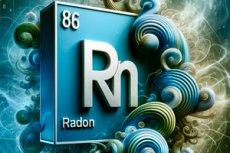Radon affects the risks of developing stroke
Last reviewed: 07.06.2024

All iLive content is medically reviewed or fact checked to ensure as much factual accuracy as possible.
We have strict sourcing guidelines and only link to reputable media sites, academic research institutions and, whenever possible, medically peer reviewed studies. Note that the numbers in parentheses ([1], [2], etc.) are clickable links to these studies.
If you feel that any of our content is inaccurate, out-of-date, or otherwise questionable, please select it and press Ctrl + Enter.

Moderate to high exposure to radon has been linked to increased risks of stroke in middle-aged and elderly women. Representatives of the University of North Carolina recently conducted a study on this topic.
Radon is a natural gaseous substance without color, taste or aroma. It is formed in the process of destruction of metals (primarily radium and uranium) in soils and rocks.
Radon can enter the premises through cracks in structures, enter the atmosphere from building materials, enter the body with water from natural sources (wells, boreholes). Since this gaseous substance cannot be physically detected, the level of its presence in the home can only be measured with special instruments.
The U.S. Environmental Protection Agency advises monitoring radon concentrations in homes: they should not exceed 4 pCi/L.
Specialists initiated a cohort experiment involving more than 150,000 women aged 50 to 79 years. The study was conducted on the recommendation of the Women's Health Initiative. None of the participants at the time of the experiment had no history of stroke and pre-stroke conditions. The participants and their health were followed up for about thirteen years.
In order to assess the radon concentration indicators, the scientists found out the places of residence of the female test subjects and took appropriate measurements there by involving the Geological Service and the Environmental Protection Agency. The participants were divided into three categories: the first category - residents of regions with increased radon concentration (more than 4 pCi/L), the second category - residents of regions with average radon concentration (2-4 pCi/L), and the third category - residents of regions with low radon concentration (less than 2 pCi/L).
During the whole period of the experiment, the specialists recorded almost 7 thousand strokes among all the subjects. In the first category of participants there were 349 strokes per hundred thousand people, in the second category - six cases less, and in the third category - 16 cases less than in the first category. To clarify the data, the scientists adjusted the obtained information, taking into account such features as the presence of diabetes and bad habits, changes in blood pressure and so on. After that it was concluded that the participants living in regions with high radon concentration had a 14% higher risk of stroke compared to other groups. In the middle concentration category, the risks were increased by 6%.
Experts are confident that regular measurements and control of radon concentration in the premises will contribute to reducing the incidence of not only strokes, but also cerebrovascular pathologies in general.
Details of the article can be found on the Neurology journal page of the Neurology journal
